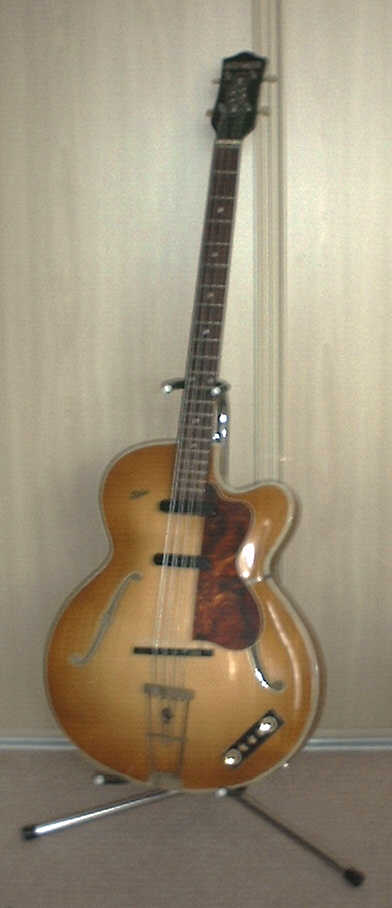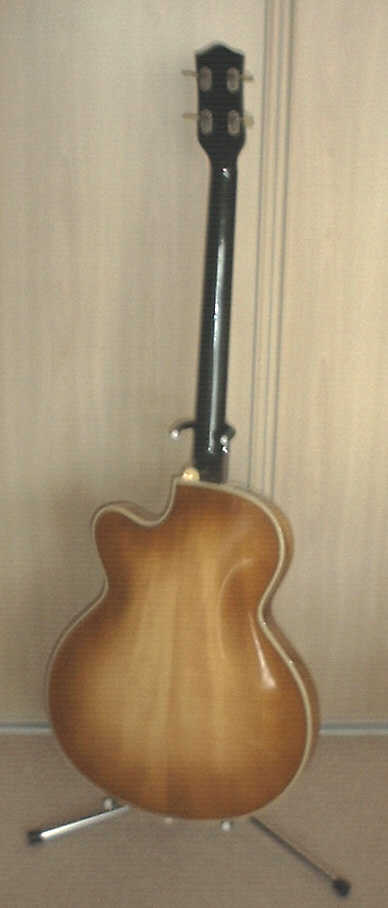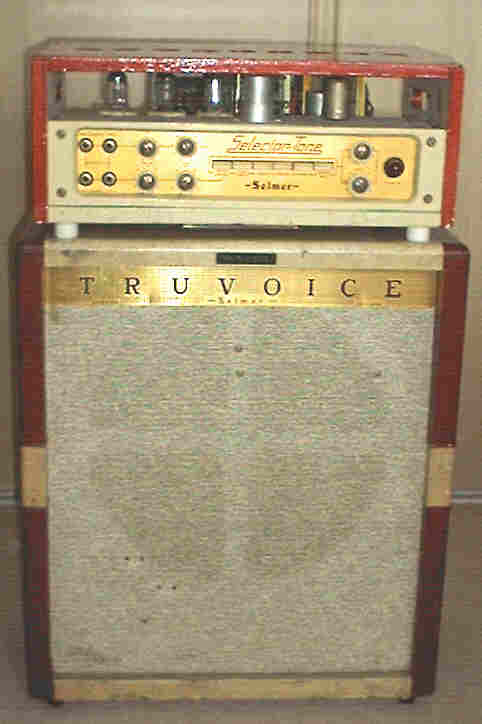 -
- 
 -
- 
Derek Law - "I started playing in my first group about 1960. I played bass on a home made/ solid guitar that I converted to a 4 string bass. In 1962, as the group improved, I was pressured to buy a “proper” guitar so I went to the local music shop. I fancied a semi-acoustic bass and was shown 2 Hofners; one cica 1958-59 and one 1960-61. (According to your pickup dating). The former was offered at £32, the latter £35. I chose the former as I was a poor apprentice. I attach a present day picture. It is a model 500/5 Serial no. 305.
The amplifier I used was, again, home made 12 watts with twin 10” speakers that regularly bottomed. As we started getting gigs at bigger venues, I loaned from the same music shop at 50d a night a Selmer Truvoice amplifier with, I was informed, a 15” bass speaker. I used this 3 or 4 times before I asked if it was for sale. It was £35 but I was told I could have it for £33 as I had previously hired it. So I bought it. It was a Selector-tone automatic. Serial no. ST/270.
I did find that in confined areas the guitar/amp combination was prone to feedback and I did get quite a bit of “valve rattle” requiring premature valve replacement. To combat this I removed the main amp from the cabinet mounted it on rubber feet so that it could be stood beside the cabinet. In the space vacated inside the cabinet I secured 6 engineering grade “blue” house bricks to stop it bouncing across the stage. I also closed the amplifier with a solid back panel. This I found sufficient for most gigs through until my “retirement” in 1966.
When we did play at premier venues, like Streatham Ice Rink and major outside venues, we were loaned more powerful Vox ‘s.
It then stayed “under the bed” only coming out for the odd tinkle. Switching in on in 1969 resulted in an almighty bang. On checking the main amp I found a capacitor had blown; spreading its entire contents around the interns of the chassis. I wrote to Selmer about circuit details and they obliged by sending me a copy of the circuit and component details.
I repaired the amp and reverted it back to the single unit construction.Not a lot happened for the next 30 years............
In 1990 I joined the local community wind band and played tuba. The age of players ranged from 7 to 70 we therefore played a wide selection of numbers: classical, selections from films and musicals, standards and rock ‘n’ roll. The latter sounded very tame with tubas, so the bass guitar came out again.
I was then asked by a couple of friends to join them and play Glenn Miller style music over a pint at a local pub. This I did and it progressed a lot further than we ever expected: resulting in a very popular 17 piece Big band. Feed-back became a problem again. Being a big band with 17 musicians, space at some gigs was limited and I had to sit close to the amp. This time I separated both amps from the main cabinet as shown in the picture. By 1998 we were performing in major venues and the amp hissed and crackled a bit so I decided to lighten its load and bought a new Trace Elliott.
Since that day, the retired Selmer amp has come out on the odd occasion playing “period skiffle” and a some C & W in front of audiences in the Midlands.
The Hofner (although it’s life is now shared with a Hohner Jack bass) still comes out regularly when the big band performs in period American Military uniform for 40’s dances."
DEREK'S "MODIFIED" SELMER SELECTORTONE AMP - AS IT IS NOW.
